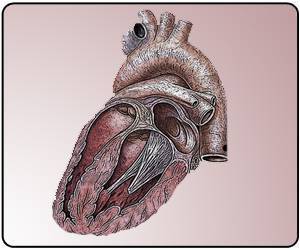A new method for measuring narrowing in the arteries may prevent the need for drug when assessing the patients for a stent, reveals study.

The most accurate method currently used to measure narrowing in arteries requires the patient to take a drug such as adenosine that dilates the blood vessels. Now, a refined, investigational drug-free technique may be just as reliable, according to the results of a feasibility study published today in the Journal of the American College of Cardiology.
Doctors traditionally assess narrowing of the coronary arteries using an X-ray image called a coronary angiogram, but it may not always be clear from the angiogram whether a stent is absolutely necessary.
A technique called fractional flow reserve (FFR), which involves inserting a wire into the artery to measure changes in blood pressure, is sometimes used in addition to an angiogram to give a more clinically accurate measurement to help clinicians make the decision to insert a stent. However, FFR requires the patient to be given a drug such as adenosine to dilate blood vessels, which can cause unpleasant side effects including facial flushing and shortness of breath. Although there is good evidence that FFR is useful, it is done in only 5-10 per cent of cardiac stenting procedures because it is costly, time-consuming and some patients cannot receive adenosine, such as patients with certain heart conduction diseases.
Now, researchers at Imperial College London, in collaboration with US-based medical technology company Volcano Corporation (NASDAQ: VOLC), have developed a way to measure narrowings in the arteries instantaneously, using the same instruments as FFR but without the need for a drug. The new investigational method, termed the instant wave-Free Ratio™ (iFR™ ,could benefit patients by making it easier for doctors to determine whether a stent is the best option.
"FFR is a valuable tool that helps doctors make treatment decisions, but certain barriers mean it isn't used as often as it might be," said lead researcher Dr Justin Davies, from the National Heart and Lung Institute at Imperial College London. "One of those barriers is the need to inject adenosine, which simulates how the heart behaves when the patient is exercising. Having to use adenosine increases the time, cost and complexity of the procedure, not to mention causing some discomfort for the patient. Our new approach could enable doctors to perform an accurate measurement without the use of drugs. We think this will have a big impact on clinical practice."
Advertisement
In the study, the researchers used the new iFR method to measure 157 artery narrowings in 131 patients. They found that iFR produced very similar results to FFR, and that the measurements using iFR were highly reproducible.
Advertisement









